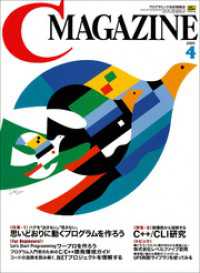- ホーム
- > 洋書
- > 英文書
- > Literary Criticism
基本説明
New in paperback. Hardcover was published in 2006. The argument of Delirious Milton, inspired in part by the architectural theorist Rem Koolhaas's Delirious New York, is that Milton's creative power is drawn from a rift at the center of his consciousness over the question of creation itself.
Full Description
Composed after the collapse of his political hopes, Milton's great poems Paradise Lost, Paradise Regained, and Samson Agonistes are an effort to understand what it means to be a poet on the threshold of a post-theological world. The argument of Delirious Milton, inspired in part by the architectural theorist Rem Koolhaas's Delirious New York, is that Milton's creative power is drawn from a rift at the center of his consciousness over the question of creation itself. This rift forces the poet to oscillate deliriously between two incompatible perspectives, at once affirming and denying the presence of spirit in what he creates. From one perspective the act of creation is centered in God and the purpose of art is to imitate and praise the Creator. From the other perspective the act of creation is centered in the human, in the built environment of the modern world. The oscillation itself, continually affirming and negating the presence of spirit, of a force beyond the human, is what Gordon Teskey means by delirium. He concludes that the modern artist, far from being characterized by what Benjamin (after Baudelaire) called "loss of the aura," is invested, as never before, with a shamanistic spiritual power that is mediated through art.
Contents
Prologue Introduction 1. Milton's Halo 2. Milton and Modernity 3. Why, This Is Chaos 4. God's Body: Concept and Metaphor 5. A Bleeding Rib: On the Creation of Eve 6. Milton's Choice of Subject 7. Revolution in Paradise Regained 8. Samson and the Heap of the Dead Notes Index
-

- 電子書籍
- 精霊の農夫【タテヨミ】第93話 pic…
-

- 電子書籍
- 月華国奇医伝【タテスク】 Chapte…
-

- 電子書籍
- 放課後は喫茶店で: 7【イラスト特典付…
-

- 電子書籍
- 月刊C MAGAZINE 2005年4…




